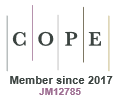Physiotherapy-led lung ultrasound in acute cardiorespiratory physiotherapy
Jane Lockstone A * and George Ntoumenopoulos BA
B
We previously published an article in Australian Health Review describing the implementation of physiotherapy-led lung ultrasound (LUS) in the intensive care unit (ICU) at Launceston General Hospital (LGH) in Tasmania.1 This letter aims to answer frequently asked questions regarding this service and provide a follow-up on the progress made.
Our physiotherapy-led LUS service has further developed both in and out of the ICU setting. Two ICU senior physiotherapists, two senior acute medical physiotherapists and one senior surgical physiotherapist have undertaken their LUS training and been successfully accredited with the Australian Society of Ultrasound in Medicine (ASUM). In addition, we have another six physiotherapists currently undergoing their accreditation, who work across the general medical wards and respiratory outpatients. The Clifford Craig Foundation in Tasmania kindly recognised this service progression and achievement, and as part of their 2024 Christmas donation appeal successfully raised funds for a LUS machine for the physiotherapy department, which will make ultrasound equipment even more accessible for physiotherapists using LUS.
Currently, LUS is integrated across the ICU, general medical and the surgical wards at LGH and are completed as part of routine physiotherapy assessments, to help guide respiratory physiotherapy management and/or if requested by the treating team. Indications for a LUS can include postoperative patients who require ongoing oxygen, especially those deemed high-risk, unclear chest X-ray (i.e. differentiating between effusions vs lung consolidation as primary pathology), increasing oxygen requirements, difficulty ventilator weaning and/or to assist weaning decision-making.
It has been exciting to watch the growth of LUS in physiotherapy clinical practice at LGH and anecdotally changes to respiratory physiotherapy management observed include re-positioning, addition of lung recruitment techniques, addition of airway clearance and re-referral for medical management rather than respiratory physiotherapy intervention. In addition, the physiotherapy-led LUS service has so far been well received from our medical and nursing colleagues with no negativity encountered.
Physiotherapy-led LUS is also developing across Australia, with 23 physiotherapists now ASUM-accredited in LUS, compared to the previously reported four1 and at least another eight physiotherapists known to be currently undergoing their accreditation. It is hoped that with the growing number of accredited physiotherapists in varying locations and states this will help enable physiotherapists to more easily access mentors/supervisors. New pathways of LUS training, including a fast track approach2 have also been successfully implemented with the aim to further reduce previously identified barriers3 and further support the growth of LUS in physiotherapy practice across Australia.
Data availability
Data sharing is not applicable as no new data were generated or analysed during this study.
Disclaimer
The views expressed in this publication are those of the author(s) and do not necessarily represent those of, and should not be attributed to the publisher, the journal owner or CSIRO.
Conflicts of interest
Dr George Ntoumenopoulos organises and conducts paid private courses in lung ultrasound including an ASUM accredited course for physiotherapists. Dr Jane Lockstone has taught at ASUM accredited courses for physiotherapists with Dr George Ntoumenopoulos. However, this did not influence the content of this manuscript.
References
1 Lockstone J, Brain M, Zalucki N, Ntoumenopoulos G. Implementation of physiotherapy-led lung ultrasound in the intensive care unit. Aust Health Rev 2023; 47: 614-618.
| Crossref | Google Scholar | PubMed |
2 Ntoumenopoulos G, Pizimolas GA, Mani S, Hayward S, Lockstone J. Lung Point of Care Ultrasound (POCUS) in Cardiorespiratory Physiotherapy and Respiratory Therapy Practices: Current Status and Future Directions. POCUS J 2024; 9: 9-11.
| Crossref | Google Scholar | PubMed |
3 Hansell L, Milross M, Delaney A, Tian DH, Rajamani A, Ntoumenopoulos G. Barriers and facilitators to achieving competence in lung ultrasound: A survey of physiotherapists following a lung ultrasound training course. Aust Crit Care 2023; 36: 573-578.
| Crossref | Google Scholar | PubMed |


